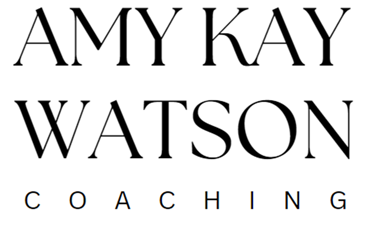Listen as a podcast:
Burnout is a word we hear often in leadership circles. It lingers in the background, often spoken in hushed tones or with a resigned sigh. Leaders walk a tightrope, juggling competing demands as they strive to support their teams and meet performance targets while retaining their humanity.
With unclear expectations from upper management, clients, and team members all competing for attention, many leaders experience exhaustion and burnout. But here’s the good news: by setting clear expectations—for both ourselves and others—we can avoid the trap of burnout while still achieving high performance. Empathy plays a pivotal role here, not as a soft alternative to accountability, but as a framework for fairness and clarity that benefits everyone.
This burnout is a word we hear often in leadership circles. But it’s often a symptom of a deeper issue: many leaders are burning out because they are stuck in a cycle of “rescuing” and over-functioning. They are trying to fix every problem and do their team’s work, which is an unsustainable path.
This pattern is a classic sign of the “reformer’s trap,” a well-intentioned but damaging default to control when what’s really needed is clarity. You can read more about how to break this specific cycle here.
When you practice empathetic accountability correctly, you don’t just save your team—you save yourself.
The Leadership Balancing Act: Empathy Meets Accountability
Leaders often find themselves pulled between the needs of their teams and the demands of upper management. Those who prioritize empathy without structure may take on too much, protecting others from necessary feedback. On the other hand, enforcing accountability without empathy creates a culture of fear and disengagement.
One client, a frontline manager, was pressured to terminate a struggling employee. Instead, she implemented empathetic accountability—balancing measurable performance goals with ongoing support and encouragement. Over time, the employee made incremental but noticeable improvements, ultimately transforming a potential dismissal into a success story.
Empathy as a Strategy for Burnout Prevention
Empathy is not about shielding people from discomfort or solving all their problems. It’s about listening, understanding their experiences, and providing support while maintaining boundaries. Leaders who master this balance build trust and empower others, reducing stress rather than compounding it.
However, empathy can become overwhelming if boundaries are unclear. Leaders may absorb too much of their team’s emotional burden or overextend themselves trying to shield employees from consequences—a sure path to burnout. To avoid this, try these strategies:
- Define Clear Expectations: Ambiguity is exhausting. Providing clear targets and timelines helps both you and your team manage responsibilities and stress more effectively. When leaders fail to set clear expectations, they often end up ‘rescuing’ their team, which is a direct path to burnout. The first step in prevention is communicating with clarity, which builds trust and shared responsibility.
- Offer Consistent Feedback: Regular, constructive feedback tracks progress, addresses issues early, and prevents crises from escalating.
- Protect Your Energy: Recognize that your capacity for empathy is finite. Prioritizing your well-being ensures you stay resilient and effective.
- Avoid Over-Rescuing: Leaders aren’t responsible for managing how employees feel. Instead, support them by asking coaching questions such as, “What’s the real challenge here for you?” or “How can I help?”
By redefining empathy as a structured and boundary-driven practice, leaders can maintain both accountability and emotional health in their roles.
This constant state of being ‘always on’ is a primary driver of executive burnout. That’s why one of the most powerful, structural boundaries a leader can set is a practical, device-free day to reclaim their focus and mental energy.
Leading with Empathy and Clarity
This burnout is rarely a personal failing. It’s often a symptom of a larger, unaddressed issue: an “anxious work system”. When leaders haven’t built a framework for clear, compassionate accountability, they are forced to personally absorb the system’s anxiety until they break. The most effective way to cure this burnout is to stop trying to fix individuals and instead learn to
If this sounds like something you or someone on your team might benefit from, click here to learn more or get in touch.
Let’s build the kind of leadership that supports both people and performance.

Non-Rescue Coaching Questions Source: Bungay Stanier, Michael The Coaching Habit: Say Less, Ask More & Change the Way You Lead Forever. Box of Crayons Press, 2016.


Pingback: Feeling Stuck as a Leader? Start Here – Amy Kay Watson